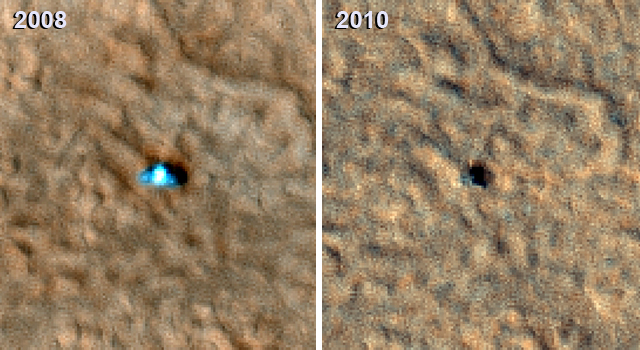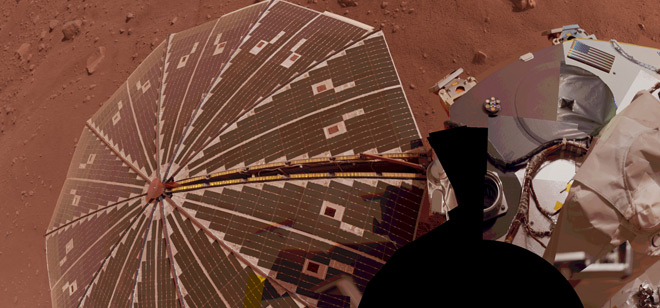The latest image transmitted by the Mars Reconnaissance Orbiter showed what appears to be ice damage to the lander's solar panels.
The good news; it exceeded its planned lifetime and while it did some interesting, but not revolutionary, things like examining underground water ice detected by Odyssey but it found one big surprise - the discovery of perchlorate, an oxidizing chemical on Earth that is food for some microbes and potentially toxic for others.

The Phoenix Mars lander taken from Martian orbit in 2008 and 2010. The 2008 lander image shows two relatively blue spots on either side corresponding to the spacecraft's clean circular solar panels. In the 2010 image scientists see a dark shadow that could be the lander body and eastern solar panel, but no shadow from the western solar panel. Image credit: NASA/JPL-Caltech/University of Arizona
"We found that the soil above the ice can act like a sponge, with perchlorate scavenging water from the atmosphere and holding on to it," said Peter Smith, Phoenix principal investigator at the University of Arizona in Tucson. "You can have a thin film layer of water capable of being a habitable environment. A micro-world at the scale of grains of soil -- that's where the action is."
Action enough that scientists continue to speculate about the implications of perchlorate's antifreeze properties and possible use as an energy source by microbes.
Phoenix landed on May 25, 2008 and completed its three-month planned mission and survived two months longer, into the winter - harsh conditions it was not expected to survive.
The shadows in the image above show the damage that must have occured when the weight of a carbon-dioxide ice buildup likely bent and then broke the lander's solar panels - hundreds of pounds of ice probably coated the lander in mid-winter, said Phoenix team member Michael Mellon of the University of Colorado in Boulder.

The Mars Phoenix Lander in better days. The Mars Phoenix Lander's solar panels is a composite of multiple exposures taken by the spacecraft's Surface Stereo Imager camera. Image credit: NASA/JPL-Caltech/University Arizona/Texas A&M University





Comments